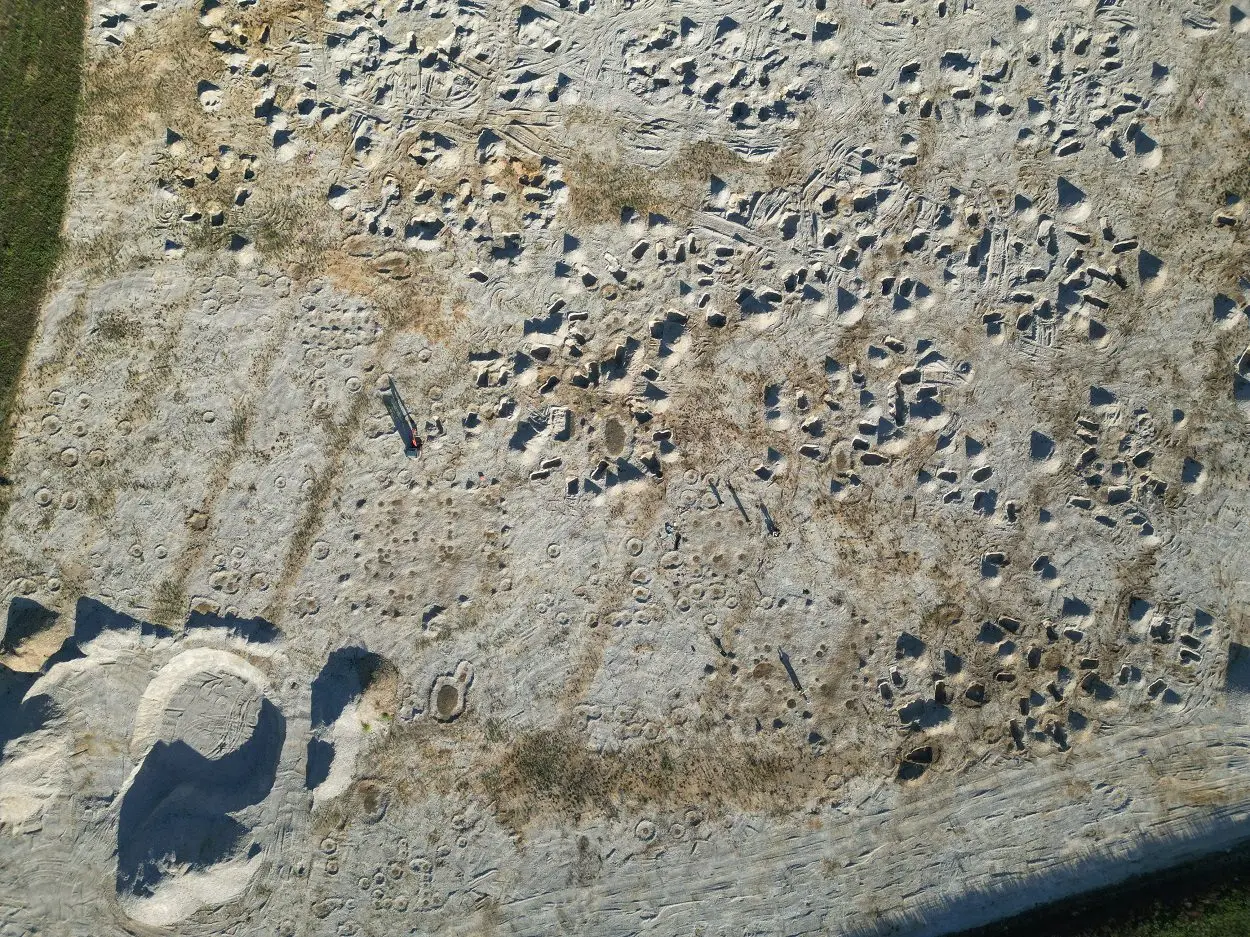In a press announcement issued by the Bavarian State Office for Monument Preservation, archaeologists have uncovered evidence indicating that Munich, located in Bavaria, Germany, was densely populated during the Iron Age.
Excavations in preparation for the development of a residential estate have uncovered over 100 ancient dwellings that could house up to 500 inhabitants during the Iron Age.
The discovery was made in the Feldmoching district, where circular brown features and post holes revealed the imprint of structures in large concentrations. According to the researchers, the structures vary in size and floor plan, which were half-timbered wooden houses using clay as a filling material.
Over 2,800 finds have been discovered, as well as two groups of graves consisting of 9 burials that date from the late Iron Age between 450 to 15 BC.
The team also found evidence of Roman occupation, evidenced by Roman burials from the 3rd to 4th century AD. In one of the burials, the researchers found funerary offerings of a plate, an intact ceramic jug, and a drinking cup made of soapstone.
According to the press announcement, the area likely contained a scattered agricultural settlement, indicated by the discovery of part of a sickle in one of the Roman burials.
Previous excavations in the region have uncovered a Roman settlement north-east of Munich, which was excavated in the neighbourhood of Denning.
During the Roman period, the Via Julia, a major Roman highway, crossed the River Isar south of Munich, and connected the colony of Augusta Vindelicorum (Augsburg) with the Municipium Claudium Juvavum (Salzburg).
Apart from scattered settlements by the Baiuvarii during the 6th century AD, major settlement of the Munich area wouldn’t take place until the founding of the town of Munich in 1158 during the Medieval period.
Bavarian State Office for Monument Preservation
Header Image Credit : Bavarian State Office for Monument Preservation





